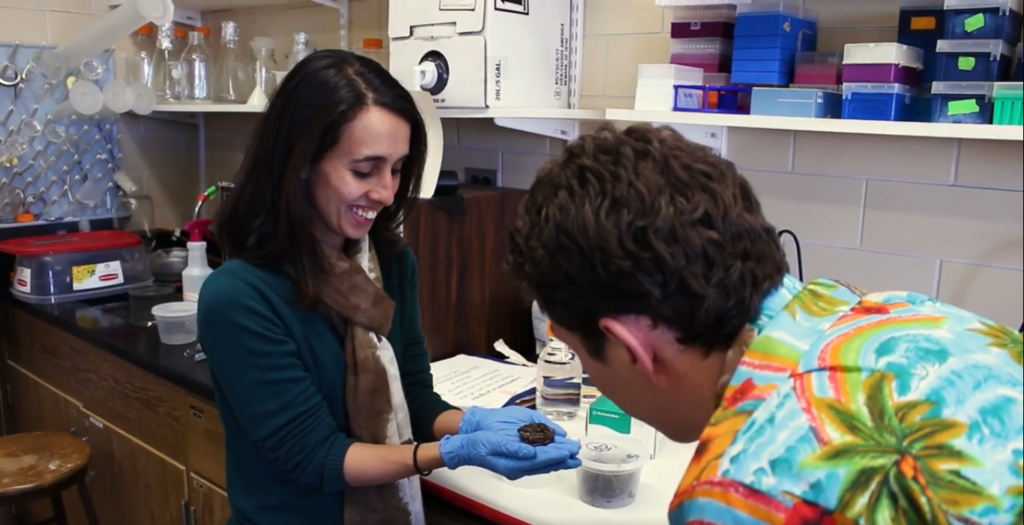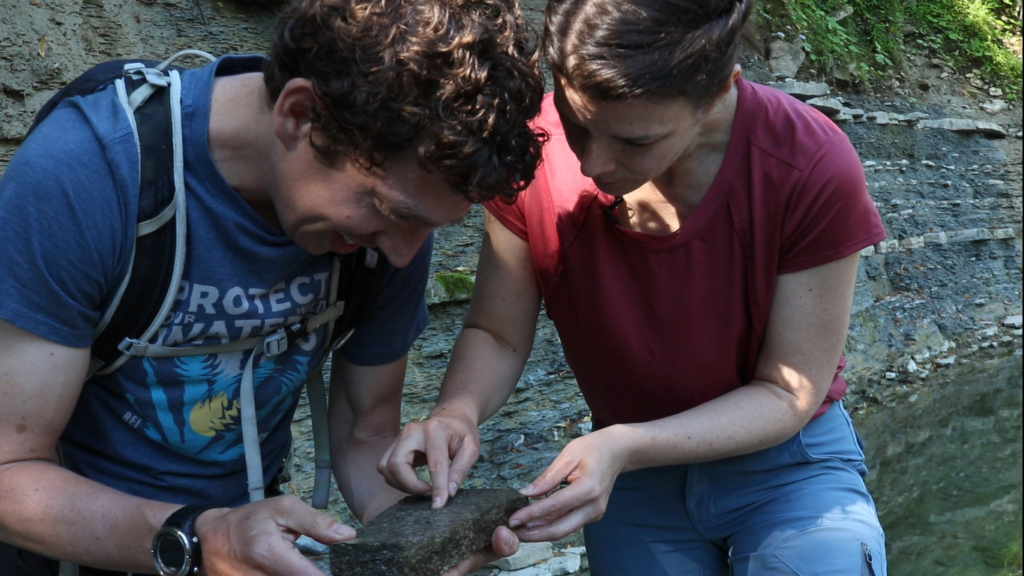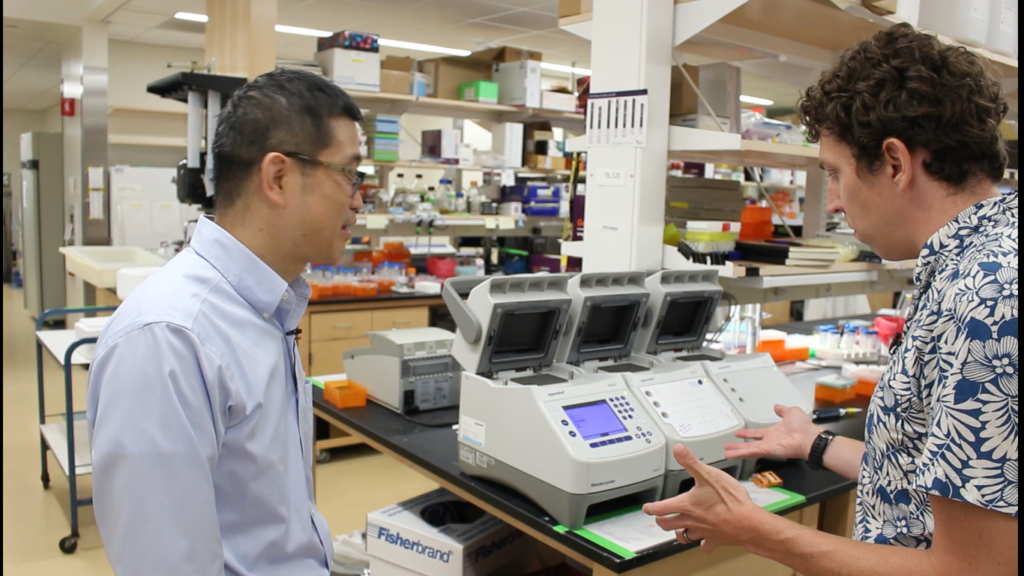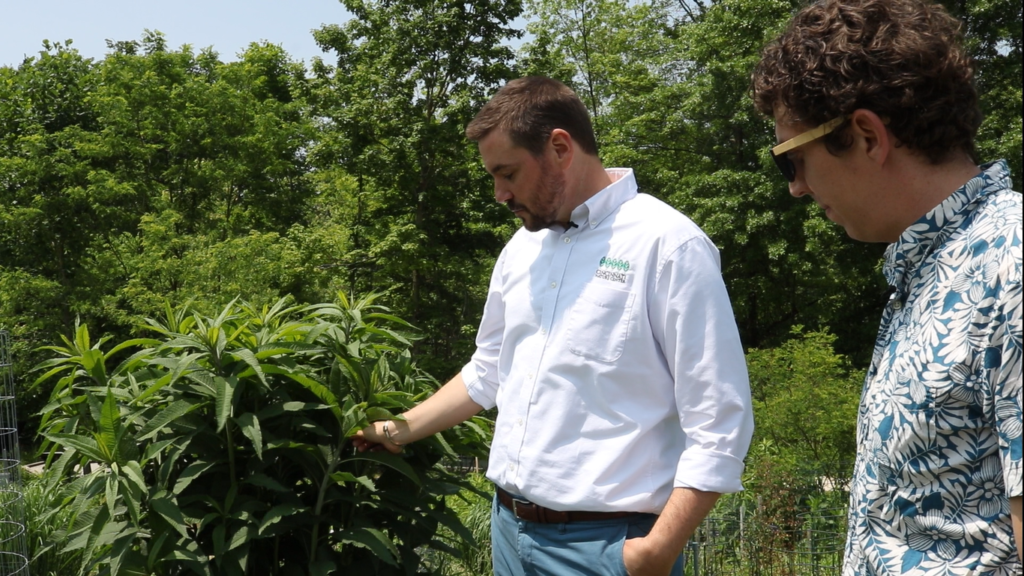Do STEM scientists, technology whizzes, engineers and mathematicians really work in ivory towers? Kids might think so. And that misconception could lead students to shun STEM-based career paths as boring and isolating. So how can educators dispel that notion and show that scientists work with other enthusiastic professionals, making breakthroughs in exciting, world-changing fields, with no ivory tower in sight? Have the kids watch Science Around Cincy, a video series exploring the work of people involved in science in the Cincinnati area.
The series’ executive producer and host, Chris Anderson, is an instructional coach at the Hamilton County Educational Service Center. He is also the “founder and explorer-in-chief” of the Science over Everything blog, which examines the relevancy of current events in science. For all of his efforts, Anderson was recently named the OSLN’s STEM Advocate of Year, having “demonstrated a passion for STEM education through public advocacy and participation in leadership organizations that advance STEM for all.”
He was happy to tell us how he reveals what science professionals do and discover on the job:
Q: Tell us about the Hamilton County Educational Service Center and your role there.
A: The Hamilton County Educational Service Center provides instructional, administrative, personnel and financial support to educational entities, nonprofits and other government agencies in southwestern Ohio and beyond.
Educational Service Centers (ESCs) were established in Ohio in 1914 to strengthen the state’s system of education. The law created 88 “county school districts” and empowered them to draft courses of study for school systems and provide in-service training for teachers. In the 1930s, the ESCs began assisting districts with fiscal and purchasing services; later, in the 1960s, their responsibilities expanded again as they began operating special education programs and increased professional development and technical assistance for schools.
My job as an instructional coach has been to design curriculum and assessments for schools and to support the use of technology and data instruction.
Q: What sparked the idea of creating Science Around Cincy, what are its goals and audience, and how is it shown?
A: I was doing some science writing for my blog, “Science Over Everything,” and someone gave me a good piece of advice: Focus on local stories. So I did some articles for places around town, but I am a very slow writer and just wasn’t able to crank out more than one to two pieces a month.
A friend then gave me another great piece of advice: Focus on videos as a format because they highlight my natural strengths of enthusiasm and talking to people. That gave me the idea of a local science show that featured researchers, engineers and scientists who live and work in our area.
Soon after, I met John Gibson, an electronic media and broadcasting professor at Northern Kentucky University in Highland Heights. John has amazing experience in filmmaking and is a Star Wars nerd like myself. We became friends very quickly, and he has been a great thought partner in making the series happen.
Our goal with Science Around Cincy is to teach kids science concepts and expose them to STEM-related fields. We, of course, want to educate students in a way that’s fun and engaging but also show them what a science career looks like.
I’d say our target audience is middle school students, however, I think our show is entertaining enough that younger students can get a lot out of it, and older students can use it as a refresher. All of our episodes, as well as shorts and bonus features, are presented live on our YouTube page, and our teacher resources are on our website.

Q: Describe some of the videos you have produced for Science Around Cincy – in general, who or what are the topics, and give us some of the most interesting, surprising and informative ones you’ve produced. Do many have STEM-based subject matter?
A: We try to get a wide variety of scientific fields for Science Around Cincy, both to give teachers ample resources and to give students an array of different science careers and areas.
A lot of kids think that scientists are holed up in a lab with a white coat doing experiments. Scientists are so much more than that. They go into the field to collect data, they create designs and test their failure points, and they solve problems with no clear solutions.
We want to show kids that scientists aren’t super-brain geniuses who live in an ivory tower, although I will say that the people we feature are all brilliant! Scientists are just very curious people who ask good questions and write down their observations. And, of course, they are generally cool people!
We’ve covered things from examining backyard ecology to engineering repelling gear for emergency workers. I’d say the most fun is when we can either get out into the field or test a hypothesis on camera. It shows kids that scientists get their hands, or sometimes their entire bodies, dirty to collect their data.
Also, to be a scientist means you have to find solutions to problems that don’t have an answer in the back of the book. You need to collect, analyze and present your data. You need to find a way to collect that data, sometimes by creating an instrument yourself. You can’t always rely on Amazon. So yes, STEM is definitely a big part of what we show kids.

Q: How many young people do you think you have reached with this series?
A: It’s hard to get a beat on how many students have watched the series. Each main episode has nearly a 1,000 views, but that could belie the true number of students impacted because 30 students who watch an episode in class counts for only one view.
These days it’s hard to cut through the noise of social media – a funny TikTok will get a million views while something that could be really valuable to instruction might not get noticed. And now teachers are more overwhelmed than ever and might not have the bandwidth to try out a new instructional tool. However, our episodes have been on Cincinnati Public School’s public access channel during remote instruction to provide students educational content while at home.
Q: In your next round of videos, do you plan to make any changes in content and/or distribution, and why? Are these videos currently accessible to those outside of the Cincinnati area?
A: The biggest change is that our videos will be broadcast on KET2, one of the Kentucky PBS affiliates, which is a great honor for me as I was one of those kids who watched a lot of PBS. We didn’t have cable growing up and got, like, only seven channels, two of which were PBS. Most important, it’s going to have a wider impact on kids and their love of science. We hope that we can continue to develop relationships with PBS stations and grow our impact on kids.
And, yes! Anyone can watch our videos. They are free on our YouTube Channel for any teacher, parent or student. Even if you don’t live near Cincinnati or have never visited, for that matter, you can watch these videos and learn something about the world around us. All you need is a good sense of curiosity.
Q: You have been working with students from Northern Kentucky University (NKU) on this project. How have they been involved?
A: The NKU students have really been the ones to bring this series to life, directing, editing and producing our videos. It’s hard to imagine this project without them, and they have brought a level of professionalism and quality that I could never do on my own. As always, I owe a huge thank you to those students: Jordan Bardgett, Michael Pikar, Megan Mixon, Corinne Byrne, Arianna Manners, Aria Brice, Zach Mayers, Jason Houston and Kerry Stephans. Working with them is so much fun.
Q: Tell us more about the Hamilton County ESC: Does it have free materials to share with teachers and/or students?
A: Each episode of Science Around Cincy has accompanying classroom resources on our website, www.sciaroundcincy.com. These include discussion guides as well as a hands-on activity for students. These guides could be perfect for remote instruction if teachers are using discussion forums. Of course, all resources are free to teachers, parents and other educators anywhere.
Q: What did the Hamilton County ESC do to help educators and students during the COVID-19 school shutdown in the spring, and what will your organization do to help schools in the fall? What is on the drawing board for the ESC?
A: Because we couldn’t shoot our main season of Science Around Cincy until later in the summer, we had to rethink what was going to be of greatest value to teachers and kids. We decided that it would be best to provide some basic public health public service announcements – how to wash your hands, why soap works, herd immunity – to teach students to keep themselves safe and to keep COVID-19 from spreading.
Going forward, we’ll provide videos on how to do basic science experiments at home, using materials you can find around the house. Not only will this give students a way to do hands-on learning during remote instruction, it gives us the chance to feature some really cool scientists.
Hamilton County ESC adapted incredibly quickly to remote instruction in the spring. I really am lucky to work with such talented educators and leaders who were willing to think outside the box to help teachers. Our services moved online, and we provided technology and instructional support. This fall, our staff will be embedded in schools and provide support in all areas as teachers and administrators return at varying levels of in-person instruction.
Q: Is there anything else you would like to share with us about Science Around Cincy?
A: We have a brand new season of Science Around Cincy coming this fall. Beginning in September, we will release one episode a week featuring all new scientists as well as digital shorts, featurettes and accompanying classroom resources.
We’ve doubled the amount of episodes this season to 16, and we’re just so excited to finally start sharing content again. There are also some exciting collaborations with science educators in the works.
You can follow all of our updates on Instagram and Twitter @sciaroundcincy.



